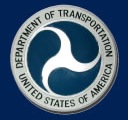 The Information Super Highway and real highways aren’t a good mix, federal regulators say. The Department of Transportation has issued “proposed voluntary guidelines” for automakers who offer digital entertainment and information systems on their vehicles’ dashboards.
The Information Super Highway and real highways aren’t a good mix, federal regulators say. The Department of Transportation has issued “proposed voluntary guidelines” for automakers who offer digital entertainment and information systems on their vehicles’ dashboards.
The electronic distraction guidelines include a call to automakers to block text messaging, Internet browsing and social-media use while the vehicle is not stopped and parked. There is also a 2-second limit on driver activity that requires taking their eyes off the road.
 Drivers would not be able to manually enter the standard 10-digit phone numbers. GPS address entry would not be allowed while the vehicle is in motion.
Drivers would not be able to manually enter the standard 10-digit phone numbers. GPS address entry would not be allowed while the vehicle is in motion.
The DOT took its time with the driver distraction guidelines, courting automakers and watching their competitive development of dashboard electronics over the past several years. The guidelines will be the first from the government.
Automakers have been closely watched participants at the annual Consumer Electronics Show as they unveiled Internet-based technologies that operate via the dashboard and vehicle controls. They promote elements such as tie-ins with the Facebook social media service.
“These guidelines are a major step forward in identifying real solutions to tackle the issue of distracted driving for drivers of all ages,” DOT chief Ray La Hood said of the highly anticipated directive from the National Highway Traffic Safety Administration.
The DOT said the advisory was “the first in a series of guidance documents” regarding “sources of distraction that require use of the hands and/or diversion of the eyes from the primary task of driving.”
The guidelines are directed at “light” vehicles such as passenger cars, minivans and SUVs. Interstate truckers and some other commercial drivers are subject to new government regulations regarding electronic distractions.
Here are the general distracted driving guidelines for automakers, as issued by the DOT:
- Reduce complexity and task length required by the device;
- Limit device operation to one hand only (leaving the other hand to remain on the steering wheel to control the vehicle);
- Limit individual off-road glances required for device operation to no more than two seconds in duration;
- Limit unnecessary visual information in the driver’s field of view;
- Limit the amount of manual inputs required for device operation.
One interesting item is a 30-character limit (not including punctuation marks) on visually presented text. This would affect most existing satellite radio receivers.
NHTSA chief David Strickland noted that some automakers already were in tune with the electronic distraction issue, others “that have no strategy at all.” BMW, for instance, has collaborated with the DOT on distraction campaigns.
Acknowledging the consumer demand for 24/7 wireless infotainment — “the tools and conveniences expected by today’s American drivers” — Strickland vowed “real-world guidance to automakers.”
The NHTSA is considering a similar action regarding “aftermarket and portable personal electronic devices such as navigation systems, smart phones, electronic tablets and pads, and other mobile communications devices.” Use of most of these devices by drivers are widely regulated.
Also on the radar are “voice-activated controls to further minimize distraction in factory-installed, aftermarket, and portable devices.”
The proposed guidelines have been published in the public register and are subject to a 60-day comment period that will include public hearings in Washington, Chicago and Los Angeles.


Just because the public wants it doesn’t mean they should have it. Driving is a full time job. It requires undivided attention. The car should not become their hone-away-from-home-entertainment center or communications center.
In one breath the DOT says that mixing the Information highway with the real highway is not good. Then they go on to issue guidelines for doing just that. To borrow a word from NTSB chairwoman, Deborah Hersman, this is more “hypocrisy.”
I personally understand not being able to keep in touch with family and friends while on the road. However, this really should not be done while the vehicle is in motion (though I am guilty of trying – and choose not to do this anymore). If the vehicle is still and pulled from the roadway off to the side, then that’s another story.